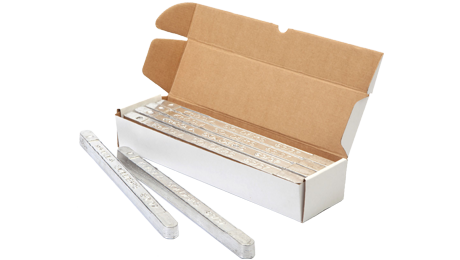Application of Zinc Rod In Industries
Galvanizing: Used to coat steel/iron with a protective zinc layer for corrosion resistance.
Electroplating: Acts as an anode to deposit zinc evenly on metal surfaces.
Cathodic Protection: Serves as a sacrificial anode for pipelines & marine structures.
Battery Manufacturing: Widely used in zinc-carbon & alkaline batteries.
Alloy Production: Essential in creating brass, bronze, and industrial alloys.
Our Zinc Rod Manufacturing Process: Precision and Quality
1. Raw Material Selection: Made from 100% virgin zinc ensuring highest purity.
2. Melting & Alloying: Zinc is melted and alloyed for strength & conductivity.
3. Casting Process: Precisely cast into Ø 13mm × 500mm rods.
4. Cooling: Controlled cooling ensures hardness and durability.
5. Drawing & Shaping: Drawn to exact tolerances for consistent sizing.
6. Flux Core (Optional): Added for applications like galvanizing & electroplating.
7. Surface Treatment: Cleaned & coated for enhanced corrosion resistance.
8. Quality Control: Strict checks ensure purity, strength, and dimensions.
Kothari Metsol ensures top-quality zinc rods trusted by industries worldwide. Contact us today
for reliable supply and expert support.
